We all know that the body decays after death, but there are several steps. Before I begin with the steps, there is one key factor to take into account to how fast the decaying process happens: the weather. The one where the decay process is the slowest is in dry heat. The most likely environment you would find constant dry heat would be the desert. This type of decay does not really have the body decay but mummifies it. Some people theorize this form of “decay” is where the Egyptian's got inspiration from. The next one is slow as well and is also a form of mummification. This one is the freezing cold. The most famous example of this form of “decay” or preservation is Otzi, the Iceman. Although for the body to fully decay in freezing cold is for it to be constant. If the body is frozen, then thawed, then frozen again and so on the body will be preserved like Otzi. The environment in which decay occurs the fastest are those the resemble rainforest heat with humidity. Most of the deaths that happen in the summer in the United States decompose this way if the body is not dealt with quickly.
Now, even though decay is a huge part of the death process, it is not the only one. That said, in the rest of this blog I will list the decaying process along with other steps in images. As I warned at the beginning of this blog, there are graphic photos ahead. You have been warned.
PALLOR MORTIS AND ALGOR MORTIS
The first two steps are pallor mortis and algor mortis. Pallor mortis is just as it sounds, the body gets a white/pale complexion. This happens within 15 or so minutes because it is no longer receiving blood. Now when the body is not receiving warm blood it, of course, cools down. This cooling period is algor mortis. I am sure you have seen in crime shows where they take the temperature of the body and come up with how long they have been dead; algor mortis makes this possible. The body cools down 2 degrees Celsius within the first hour, then 1 degree Celsius every hour after that until it reaches room, or ambient, temperature.
RIGOR MORTIS
The following photo is an example of the next step, rigor mortis. This happens 2 to 6 hours after death. In this step the muscle fibers tighten as cause from chemical changes. Rigor mortis can last from 24 to 36 hours. After this time the enzymes begin to eat the protein that was keeping the body stiff.
Next we have livor mortis. This is when the body begins to turn colours. Although I have put this after rigor mortis, this step can happen within minutes or hours after death. When the heart stops beating the blood is a victim of gravity as it flows down to the parts that are closest to the ground. If the corpse is in a supine position, the blood goes to the buttocks and the back. In the photos for this step you can clearly see in what postion they died in. The one in the middle you can see on the side the difference in skin colour. But livor mortis is a cause of this. When the blood flows from the veins towards the top of the body those parts turn shades or purple-red discolouration.
Then putrefaction begins. Here the corpse turns one more colour: green. This along with a putrid odor were once seen as signs that the body was indeed dead. Insects, such as blue bottle flies help with this one. They surround the corpse and lay eggs in the body. One corpse can be the host to 2000 of these flies. A mold forms in the cracks of the body, and there is a cheesy smell on the corpse. Putrefaction also produces batyric acid which helps in the next step.
Which is decomposition. Pressure from the batyric and the gasses helps in decomposition. It causes the body to move and leak. You would think the first organ to decompose would be the stomach because it will no longer has the live enzymes to keep the acid under control, so it begins to eat itself, but it is not. The first organs to decompose are the larynx, which is the voice box, and the trachea, which is the wind pipe. The two organs that stay the longest are the uterus in women, and the prostate in men.
When everything has been decomposed, which does take a while. For a body buried in warm soil, it will take 25 years to decompose, for dry soil, 50 years to decompose, and in the desert 100 years to decompose. Well, after the body has been eaten by flies, other bugs, even eaten by itself, all that is left is the skeleton. The actual skeleton can last for hundred of years underground before it disintegrates, and sometimes they may fossilize.
Please feel free to leave me a comment either about this blog or on an anthropological subject you would like me to cover.
(photo below is all of what I have described in this blog but with a pig as an example)
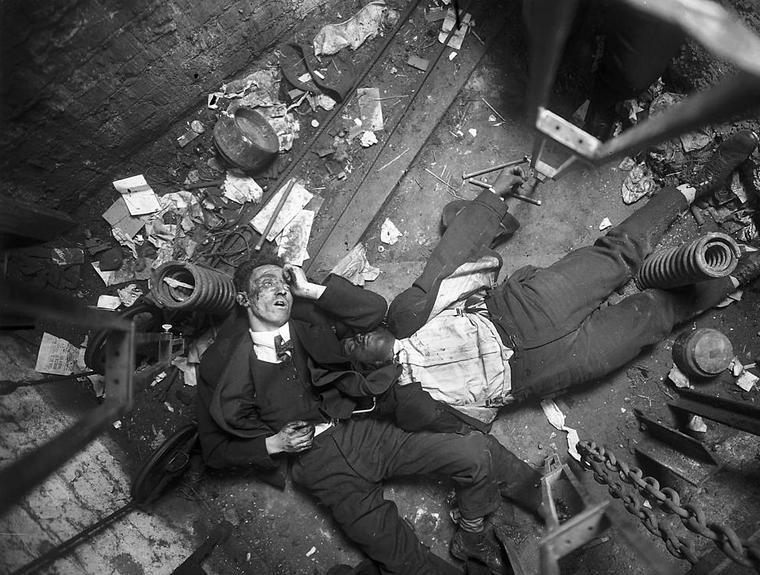


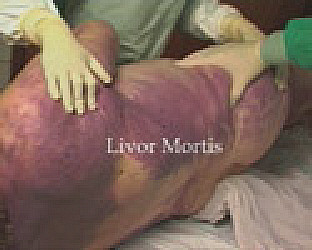
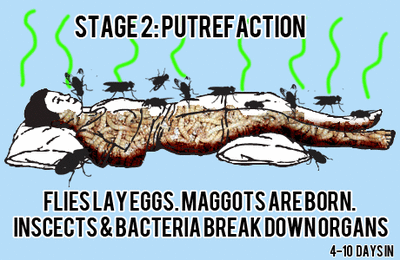



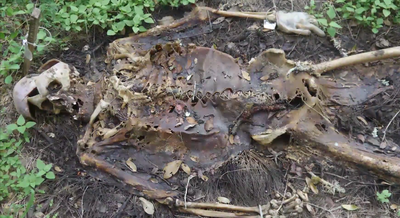
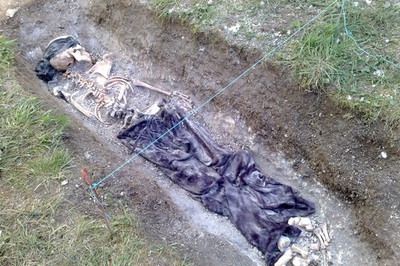

 RSS Feed
RSS Feed
